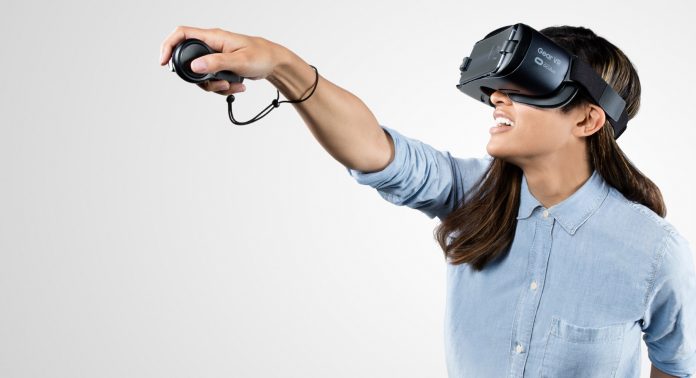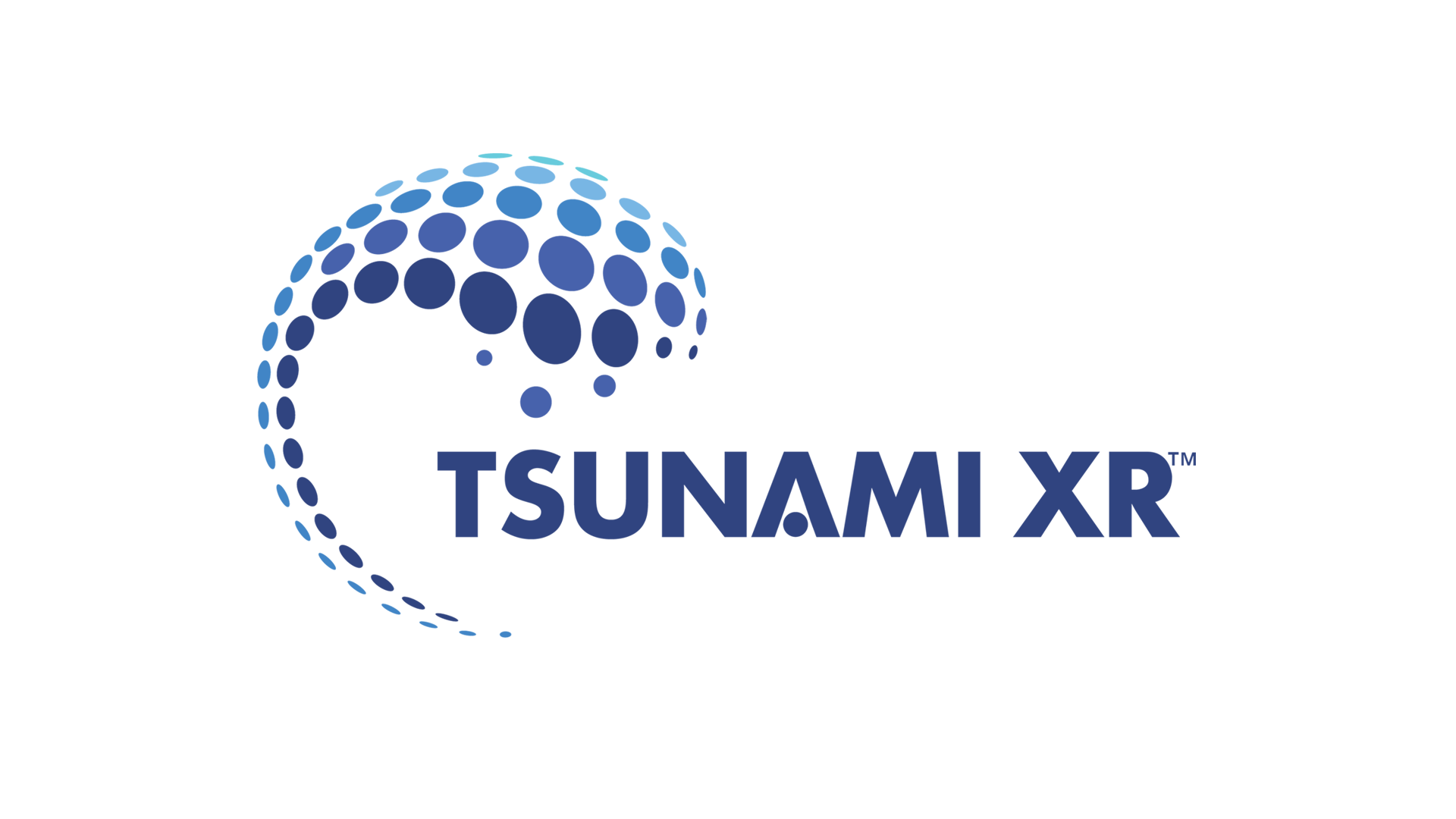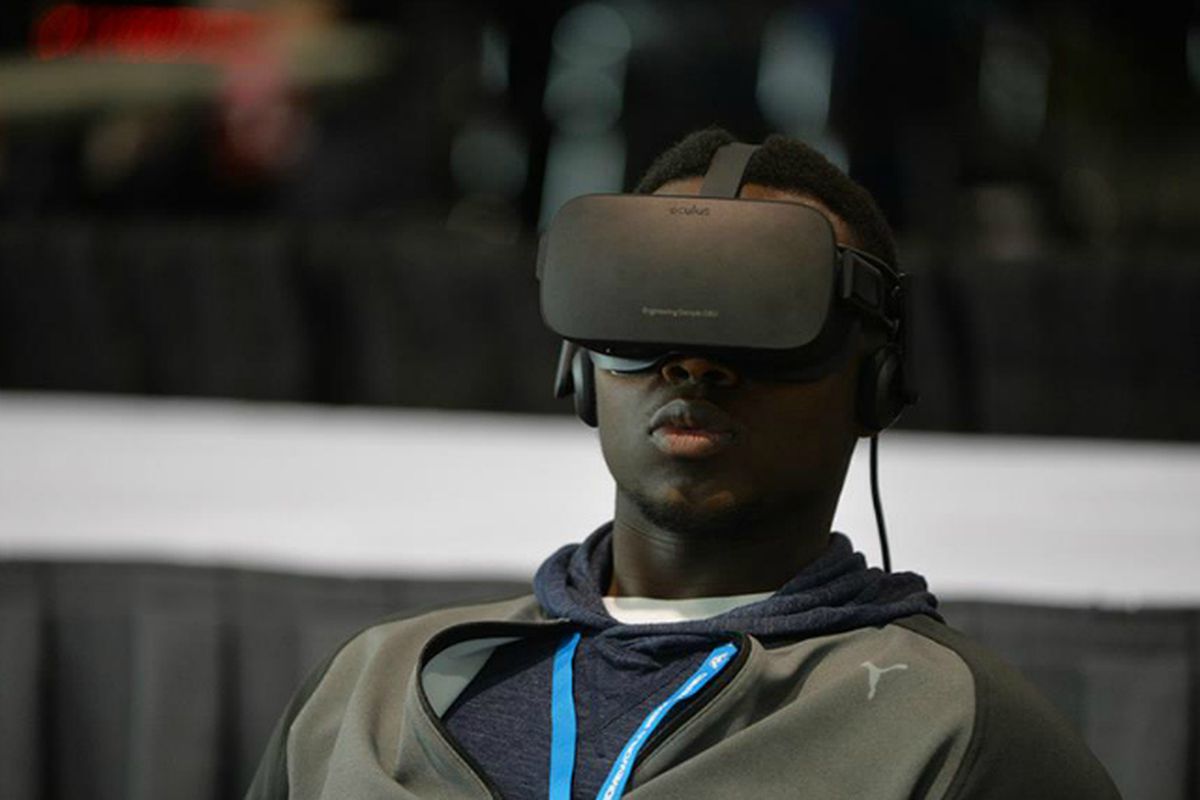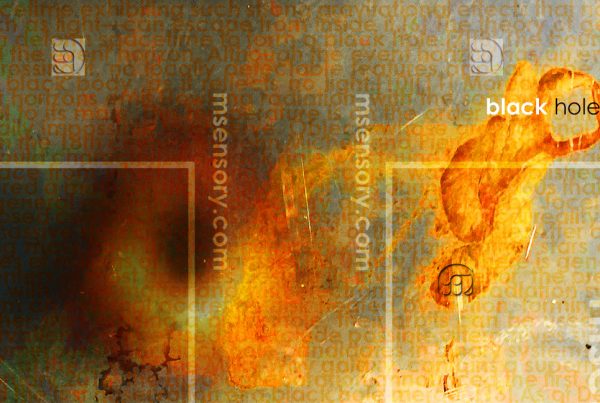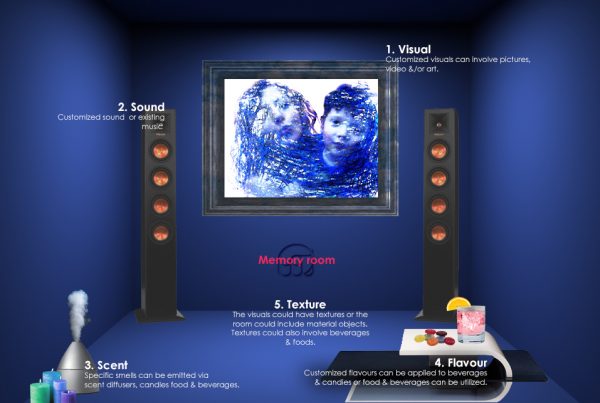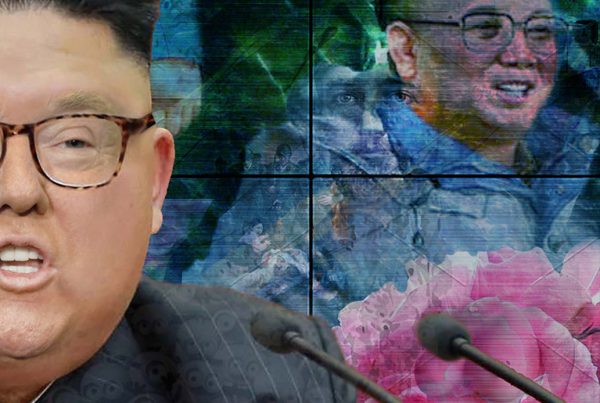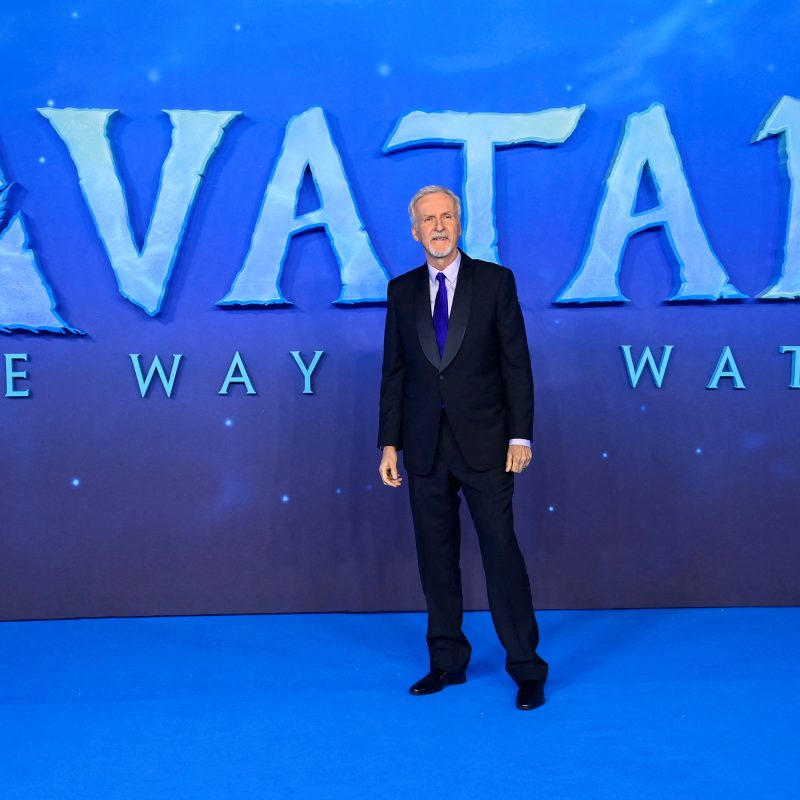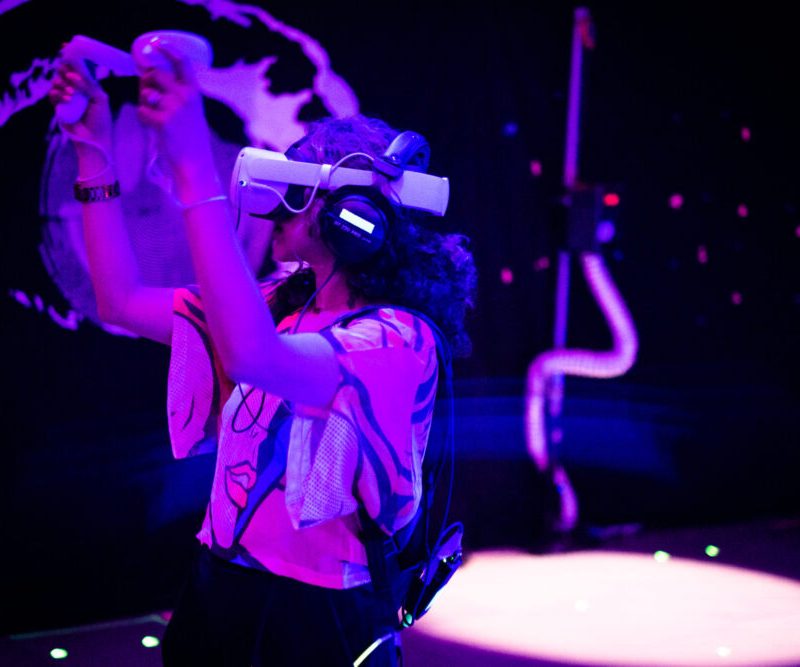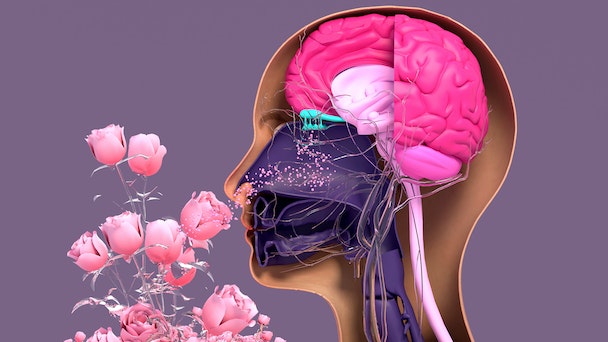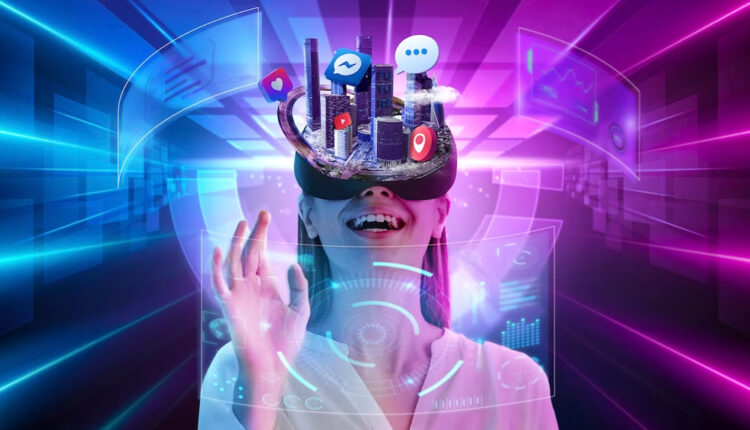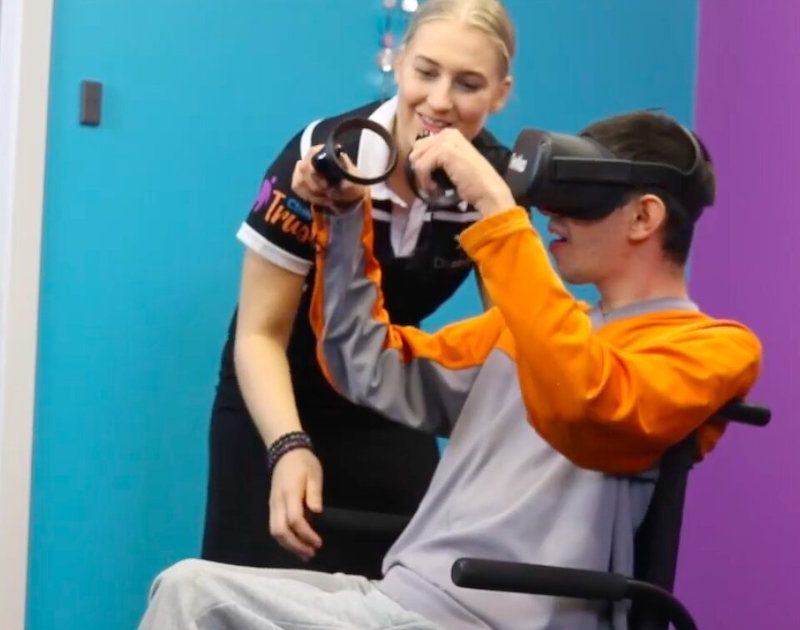But really, What is VR?
“Presence,” as defined by the website VR Focus, “is the magic of virtual reality, the feeling that you’re actually in the virtual world.” Presence, then, includes the suspension of disbelief. Often we hear the term “suspension of disbelief” when referring to movies and television. But film and TV exists within a simplified realm where it’s precisely because the viewer is so immediately aware that what they’re seeing is not real, it gives them the mental room to buy into the ruse. VR is more psychically “expensive”, if you will. VR has to reach further and grip firmer in order to fool the average person.
The definition of Virtual Reality can be a bit slippery and can vary depending on who you ask. But all subjectivity aside, virtual reality is a computer-generated artificial environment. When done properly, VR transports users to an alternate simulated environment created to stimulate a user’s sight, smell, touch, hearing and vision to make them belief the experience is real. Achieving this goal hinges on whether the specific VR technology can make a user feel that they are “in” the experience. Of course, not all senses must be tapped to create such an allusion, but the more senses stimulated the better for total immersion. Here is where the VR community is at with stimulating the various senses.
Augmented vs. Virtual
While VR’s hardware and software often finds applications in the entertainment world, augmented reality (AR) is lately being more and more put to practical uses in the workplace. The basic distinction between VR and AR is that VR is most accurately described as an escape from reality and into a new, virtual one; augmented reality, on the other hand, uses various modes of perception to alter concrete reality without replacing or escaping from it altogether. The term “augmented reality” was coined in 1990 by Tom Caudell, a Boeing researcher. Caudell coined the term to characterize a display module that airplane engineers used at the time. These display systems operated using a mix of virtual graphics and real-world physical reality. Not coincidentally, the United States Military has gone on to contribute some of the greatest technological advancements in AR. In 1992, the U.S. Air Force’s Armstrong Lab developed one of the earliest AR systems capable of providing realistic, mixed reality augmentations. Via a head mounted fixture (a la the Oculus Rift), this nascent AT system provided “an overlay of augmented sensory information upon a user’s perception of a real environment in order to improve human performance in both direct and remotely manipulated tasks.” Along with this primitive HMD, the AR system also included a full upper-body exoskeleton featuring controllable mechanical arms.
Within the ’90s decade, regular uses of AR became more frequent. One example that might be hard to believe relates back to televised sports: In 1998, twenty whole years ago, the NFL projected the first “1st and 10 yellow line” during a live game, ushering in a new era of live sports analytics that streamline data for fans. In the modern age some of the most obvious examples of AR come in the form of consumer level mobile apps. Pokemon Go, unleashed in 2016, had the effect of bringing people out and about, interacting with the real world, while simultaneously sucking them into their devices further. Althought Pokemon Go proved immensely popular and successful, to date the app exists as one of the gaming industry’s only forays into AR; generally the industry has gravitated toward forwarding the VR realm.
Even if the gaming industry has seldom dipped its toes into AR, other mobile apps have grown tremendously in popularity due to digital augmentation. Snapchat’s eternal rotation of filters gives its users a never ending supply of reality augmenters. Snapchat has moved even further into the AR world via their Lens Studio design app, which allows users a more customizable means of augmenting their mobile-filtered reality.
Even while examples of AR has proven profitable in the mobile consumer app world, the potential for AR to make our world more convenient and thus possibly safer has huge implications for the technological, medical and automotive industries.
Microsoft has made some of the strongest AR leaps and bounds in recent years. The HoloLens presents the first self-contained, holographic computer. Essentially, the HoloLens enables users to operate the system by interacting with the holographic imagery projected the real world. Due to the “disconnected” nature of such an operating system, the HoloLens computer has become integrated into comfortable outerwear for the user. Even a hard hat model has been developed for use by construction workers.
Tsunami XR has been one of the forerunners for developing AR software. These softwares are used to compile and analyze data, evaluate technologies and equipment, and improve training efficiency, productivity and safety in the work place.
Tsunami XR’s VR offerings rival their AR developments. “Tsunami workplaces” provide instant, on-demand collaborations across all devices for users. The emergence of digital workspaces, essentially “virtual offices”, has the potential to reshape how the modern world conducts its business. Travel costs go down, and temporal and linguistic barriers dissolve thanks to the capabilities of VR.
Vision
Head Mounted Displays, or HMD’s, like the PlayStation VR and Oculus Rift are becoming the clear choice for VR end users as a method for delivering high class graphics at historically rock-bottom prices. HMD’s are display devices that are worn on one’s head or as part of a helmet. The Oculus company was a pioneer in compiling the technology at reasonable rates around 2015. Prior to the Oculus Rift, most consumer HMD’s had a diagonal field of view of about 30 to 40 degrees, and you were only able to see a small image way off in the VR distance. But the oculus Rift debuted a 110-degree diagonal field of vision that made users feel less like they were staring at a VR screen and more like they were “in” the experience. What’s more, the device originally sold for $600 dollar’s making it accessible to programmers and gamer’s alike.
Once HMD hardware became available the applications for the device have expanded rapidly including innovations in gaming, aviation, engineering, and medicine. Companies like XR are using HMD tech to deliver workspace solutions to a variety of industries.
Audio
When it comes to VR immersion, perhaps the most important sensory input is sound as people react first to auditory cues than visual ones. Many VR content creators use binaural recording to create a 3-D sound sensation. Two microphones are set up 7 inches apart often in a ‘dummy head recording” where each “ear” is fitted with a microphone. This type of recording and play back go back to 1881 but did not gain favor with the public until the 1980’s. Spatial audio is now coming into its own with the ability to “localize” a sound, where if you had your eyes closed you could imagine certain sounds emanating from a particular direction and distance.
In an essay by Timothy Duncan titled “The Importance of Sound in Virtual Reality”, the writer posits that, along with the visual elements of storytelling, sound “affirms whether or not the experience is believable, and it creates emotional impact.” Beyond these vaguely poetic musings on the power of sound, Duncan goes on to cut straight to the chase: “Another way to understand the importance of sound in virtual reality is to measure how much companies are investing in audio technology.” In other words, follow the money. Industry giants like Facebook and YouTube have begun investing in VR. Facebook has recently developed Spatial Workstation, a host of free audio tools for VR production.
One of the most vital elements of VR is the abstract movement toward “presence”: VR HMDs envelop the wearer’s visuals, fabricating a three-dimensional space. But to really sellthat space, to “affirm whether or not the experience is believable,” the sound of the VR experience is key. Human beings have an extremely sophisticated sense of sound localization. The direction and source of a sound is easy for us to realize. Part of this highly developed ability comes from the way our ears sense the movement of sound traveling through the air. The two differing audio signals picked up by our ears is combined and evaluated in our brains to grant us a precise spatial awareness. This is not dissimilar to the depth perception phenomenon our brains create via our two eyes. To measure the effects of binaural audio, VR researchers have created “head-related transfer function” (HRTF) data.
Touch
Tactile inputs are still being developed and incorporated into the VR landscape. Tactile input can include light touch, firm touch, and the perception of different textures including dry to wet and messy. Such inputs as omni-directional treadmills simulate walking or running through content rather than passively experiencing from a chair or couch. Tactile input wearables such as the ‘teslasuit’ are being integrating Electro Muscular Stimulation, or EMS, into a wireless suit. The suit is intended to mimic sensations ranging from a cool breeze to the impact of a bullet. Such technology has not yet gone mainstream, but when it does, it is sure to be a game changer.
Other tactile inputs have been developed and implemented in VR for over 20 years. Haptics or touch feedback has progressed from vibrating rumble motors to ultrasonic feedback. Children of the 90’s will remember one of the first widespread applications of haptics as the “rumble pack” attachment to the Nintendo 64 game controller. When one pulled the trigger on the controller a spinning weight motor would make the controller vibrate simulating action. Modern Haptics can be found in newer smart-phones.
Taste & Smell
The taste and smell sensations have not developed in VR at the same rate as the other senses. This remains a mystery to those that see these sense’s as the holy grail of the VR experience. Recent research by the University of Ottawa has found that adding smell to a VR environment “increases the sense of presence”. Several theme park attractions have used perfumery to trick the minds and noses of audiences. When the viewer approaches a dumpster, an unpleasant odor would fill the room. Or conversely as the attraction content approached an orange grove a pleasant citrus odor would be piped in. Perceptions of smell can also alter what a VR user is tasting according to the Tokyo University’s Cyber Interface Lab who is undergoing a “Meta-Cookie” project.
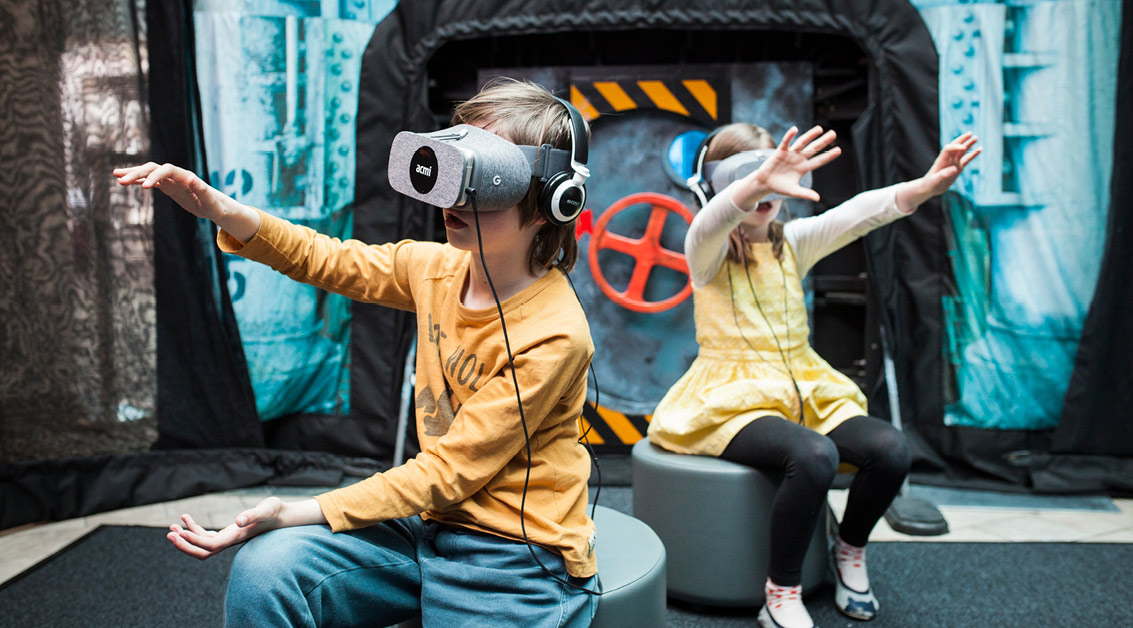
VR and AR developers largely focus on the senses of sight, sound and touch. Smell is seldom brought up. Why is that? Smell is “central to how we perceive and remember the world.” According to one critic, VR without some value of artificial scent would “arguably always be a bloodless imitation of reality.” The basis for this indictment of scentless VR is biological: smell, of the five senses, is the only one that connects directly to the amygdala. The amygdala, one of the earliest (evolutionarily speaking) parts of the human brain, is in charge of some of our strongest emotions. This explains why one often hears that smell yields the strongest sense memory.
Benson Munyan III is a VR researcher at the University of Central Florida. He is among the few scientists seeking ways to incorporate smell into the VR experience. Additionally, Munyan’s studies include the capabilities of VR to treat post-traumatic stress disorder (PTSD) in military combat veterans.
In an experiment that involved a VR experience wherein the users interact with a “spooky carnival”. The user wanders through this abandoned carnival searching for his or her lost car keys. For the experience, Bunyan and his team set up a “Scent Palette” – a silver box which emits specific smells at key moments in the VR experience. Participants reported a greater sense of presence – that is, being there. The removal of the smells, however, “caused their sense of being there to plummet.”
The problem with this Scent Palette technology is that, without naturally occurring spaces and atmospheres, the smells become mixed in noxious ways that prove as damaging to presence as the lack of any smell is.
VR and PTSD
As mentioned above, VR has been used to great success in treating those afflicted with PTSD. VR first emerged as a tool for treating PTSD in 1997. That year, researchers at Georgia Tech brought together early successes in the field of exposure therapy with early advances in virtual reality. The first trial concerned military veterans who fought in the Vietnam War. Dubbed “Virtual Vietnam”, the experience entailed the user sitting in a helicopter flying over a jungle clearing. Within a month of the treatment starting, all ten of the trial patients reported signs of significant improvement. Four years later, the same experimental treatment was used to aid burn victims following the September 11th terror attacks in New York City.
VR has even been successful in aiding the effectiveness of medication. In a trial involving the tuberculosis drug D-Cycloserine, the introduction of VR was shown to “accelerate the treatment’s effectiveness.” To be clear, the drug did not aid in the treatment of tuberculosis in this case, but rather was found to significantly increase a patient’s ability to “relearn”. According to the lead researcher, “We had a 70 percent remission rate [of trauma] within six months.”
In the last number of years, these VR centric exposure therapy sessions have proven very successful in treating veterans of the Iraq and Afghanistan Wars.
“Exposure therapy is an ideal match with VR,” explains Albert Rizzo, a research professor at the USC Davis School of Gerontology.
“You can place people in provocative environments and systematically control the stimulus presentation.” Rizzo elaborates that VR treatments are in many ways the greatest application available for psychiatrists and researchers looking to better address PTSD: “We can take evidence-based treatments and use it as a tool for amplify the effect of the treatment.”
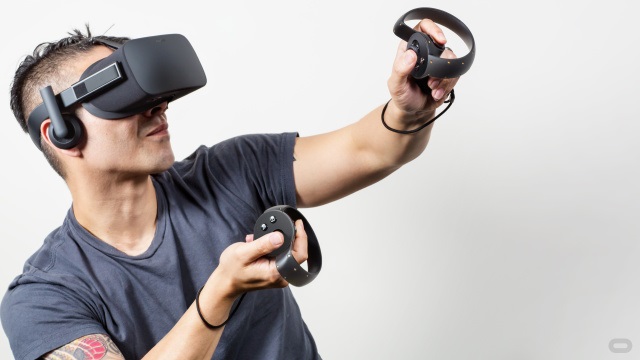
Tomorrow’s VR
Tomorrow’s VR will incorporate all the senses into an experience that rivals real life and beyond. Leaders of the VR sector like Oculus founder, Palmer Luckey, and Tsunami XR CEO, Alex Hern, are at the forefront of this breakthrough. Some analyst are predicting the VR market to rise to $209.2 billion in 2022, which will surely be attributed to heightened sensory inputs.
Connect with Alex Hern on LinkedIn for more information.
Source: Alex Hern and Tsunami XR Getting Better All the Time – HiTechChronicle

